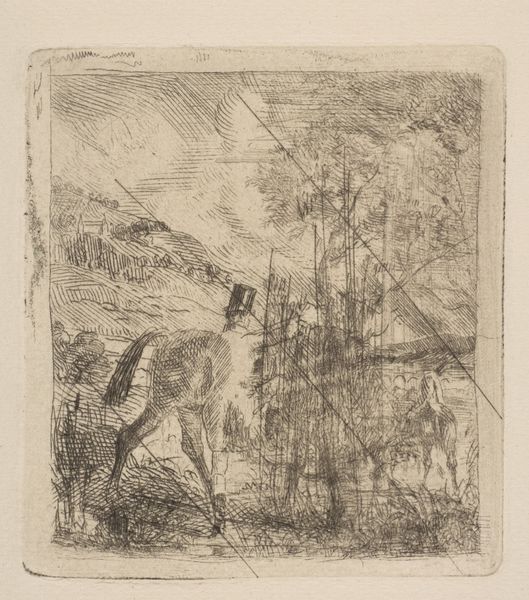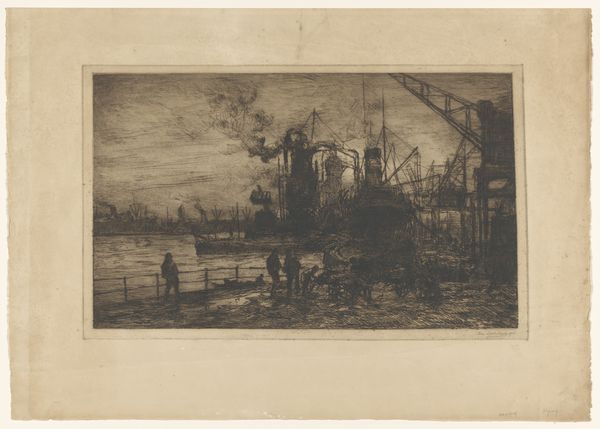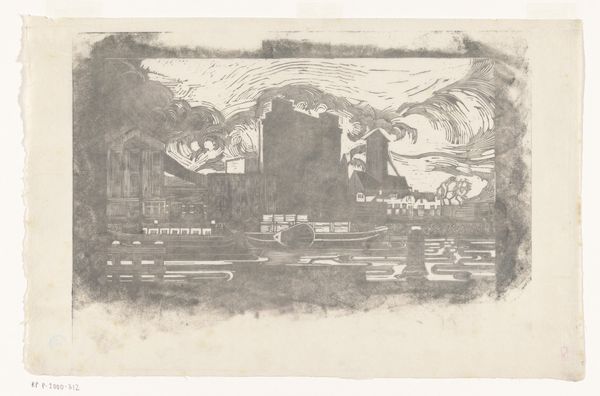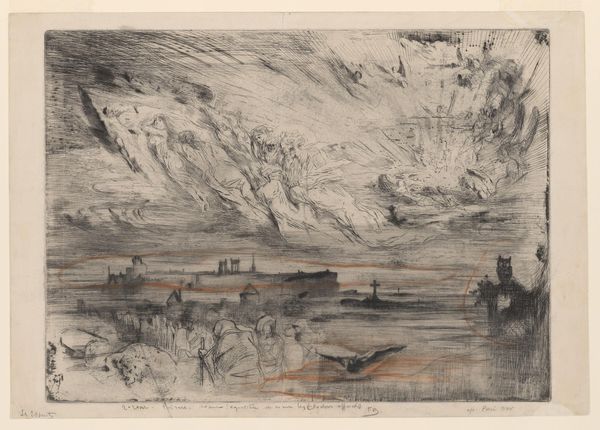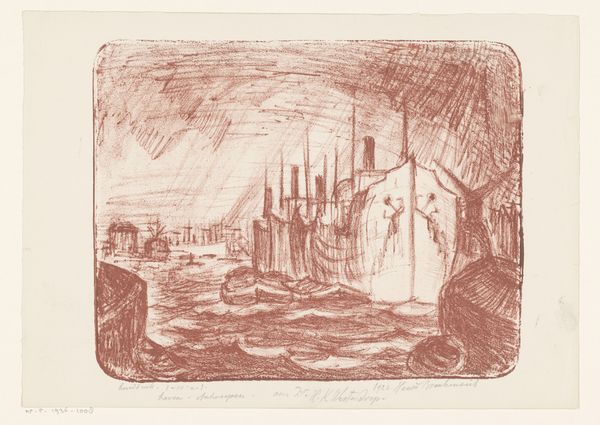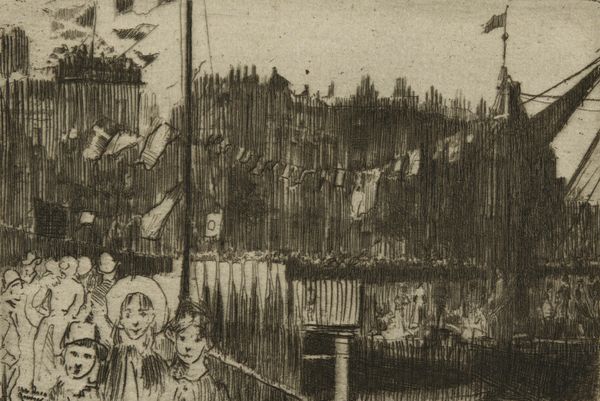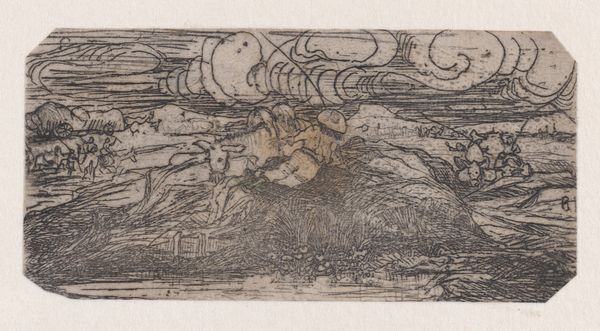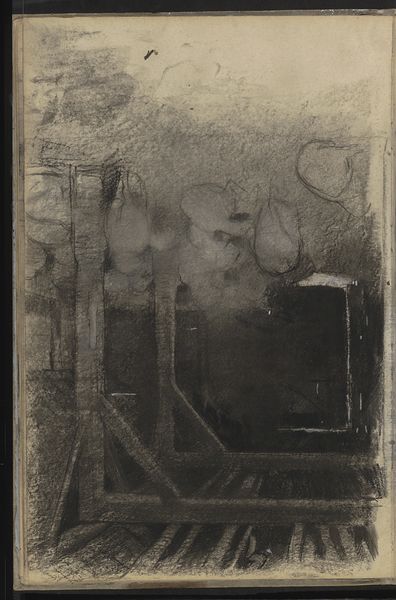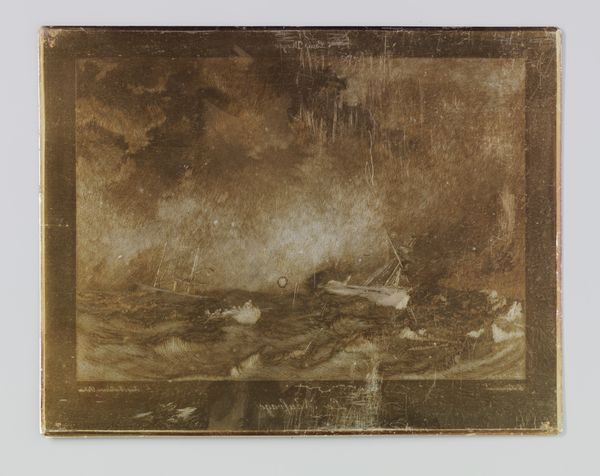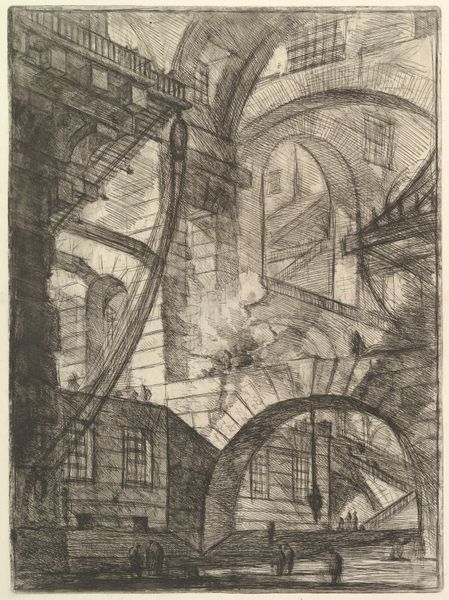
drawing, pencil, mural
#
drawing
#
narrative-art
#
coloured pencil
#
pencil
#
symbolism
#
cityscape
#
mural
Dimensions: height 780 mm, width 800 mm
Copyright: Rijks Museum: Open Domain
Curator: This is "Industrie. Ontwerp wandschildering te Rotterdam," a drawing by Huib Luns from around 1908, held here at the Rijksmuseum. It's a design for a mural, rendered in pencil and colored pencil. What are your first impressions? Editor: My immediate reaction is…oppressive. The weight of labor is so palpable, both literally with the figures bearing the weight above, and figuratively with that looming industrial structure under construction. There's a real tension between aspiration and exploitation here. Curator: Indeed. Note the symbolism Luns employs. The muscular, almost classical figures toiling in the darkness, contrasted with the ethereal, light-filled forms above—it's an age-old allegory of man reaching for the divine through labor and technology. Editor: But that "divine" looks an awful lot like a white, winged figure overseeing the whole project. Is that supposed to be Progress? Because from where I stand, progress for whom is the critical question here. Curator: Precisely. Luns was working during a time of rapid industrial expansion, but also growing social awareness. The visual vocabulary of the time was steeped in allegorical figures intended to elicit these questions. What does it mean to build a modern city? Who benefits, and at what cost? Editor: The choice to portray the laborers as almost identical, faceless, speaks volumes too. They're dehumanized by the very forces of industry they're building. It also raises concerns about who got to have their story told, and what biases were included or left out. Curator: Look too, at the scale and ambition implied by the scaffolding. Luns captures that early 20th-century optimism, yet it is undeniably tinged with anxiety, visible here through contrasting tones that bring up images of forges and furnaces in dim light. Editor: And this was intended for a wall, to be a large-scale public declaration. This mural would become part of the fabric of the city itself. What does it say about Rotterdam's identity, then and now, that this vision of progress was chosen to be presented to everyone? Curator: It serves as a powerful reminder. Even depictions meant to glorify can reveal the anxieties and injustices inherent in the historical moment. This design invites us to reflect on what is remembered, what is omitted, and who holds the power to shape the visual narratives that define our cities. Editor: Ultimately, an important prompt for questioning power structures then and ensuring more just representations in the present and future. Thanks for pointing out these important factors that need to be remembered about Luns' work.
Comments
No comments
Be the first to comment and join the conversation on the ultimate creative platform.
